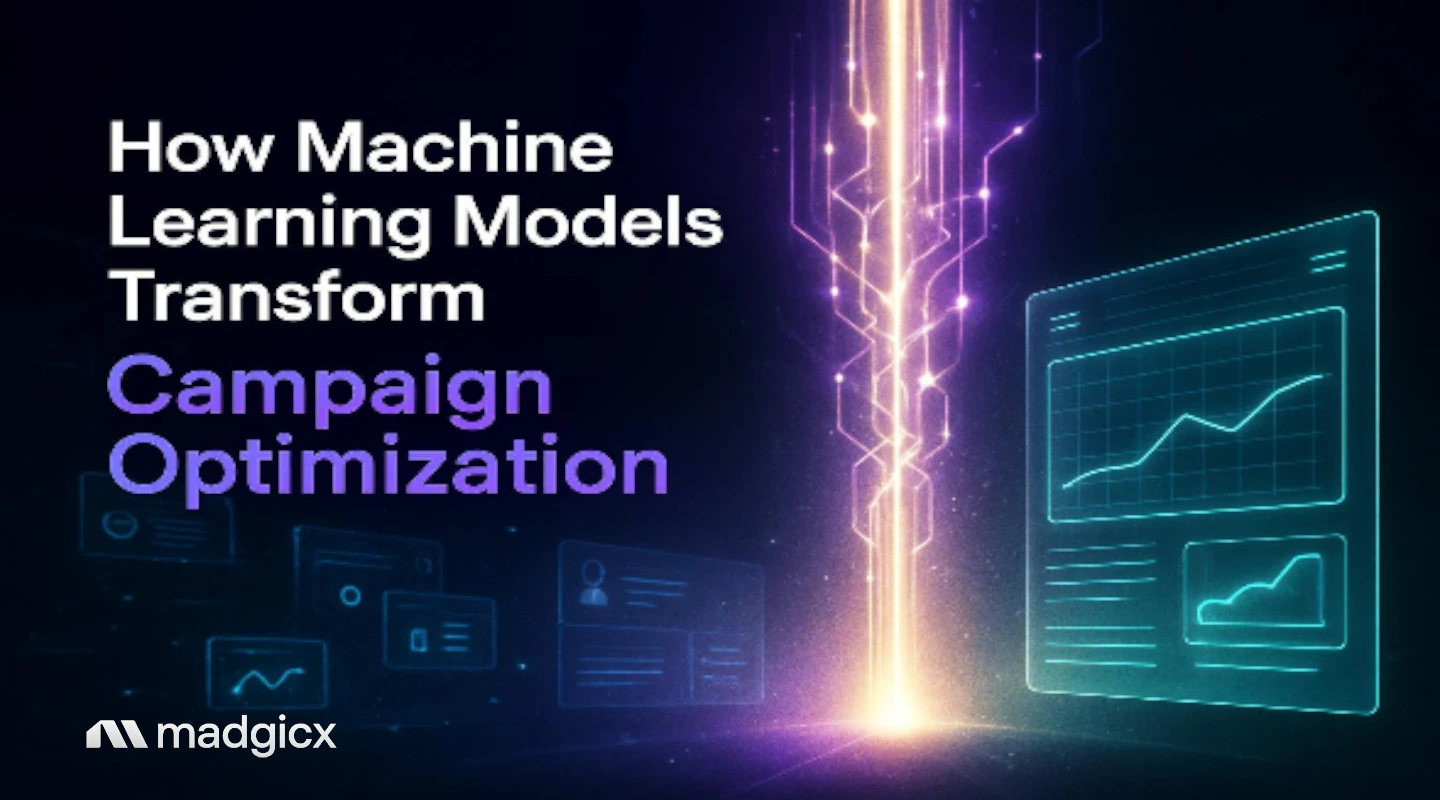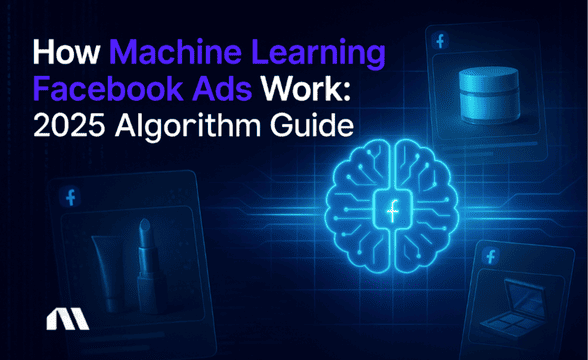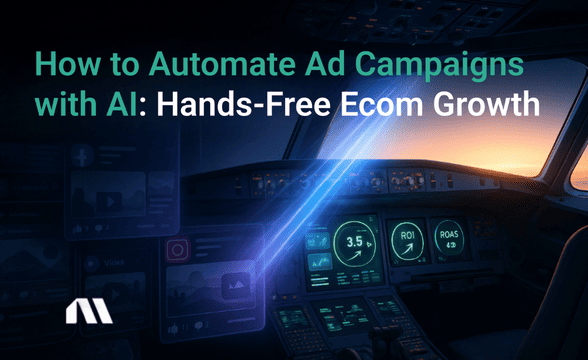Discover how machine learning models boost campaign optimization. Complete implementation guide with proven strategies, tools, and ROI frameworks.
Picture this: It's 2 AM, and you're hunched over your laptop, manually tweaking bid strategies across 15 different campaigns. Your coffee's gone cold, your eyes are burning, and you're wondering if there's got to be a smarter way to optimize performance while you actually get some sleep.
Here's the thing – there is. Machine learning models for campaign optimization use advanced algorithms to analyze user behavior patterns, predict conversions, and automatically optimize campaign performance. According to recent research, this approach delivers an average 25% increase in conversion rates compared to traditional manual optimization methods.
But here's what most guides won't tell you: implementing ML-powered optimization isn't just about flipping a switch and watching the magic happen. It requires a strategic approach, the right tools, and a solid understanding of how these algorithms actually work with your existing campaigns.
That's exactly what we're covering in this complete implementation guide.
What You'll Learn
By the end of this guide, you'll have everything you need to implement machine learning models for campaign optimization successfully:
- How machine learning models identify high-converting audience segments
- Step-by-step implementation process with realistic timelines and resource requirements
- 8 proven ML techniques that increase conversion rates by up to 25%
- Bonus: ROI calculation framework to measure ML impact on your bottom line
What Are Machine Learning Models for Campaign Optimization?
Let's start with the fundamentals. Machine learning models for campaign optimization are AI algorithms that learn from your campaign data to improve conversion performance with minimal manual intervention.
Unlike traditional optimization approaches that rely on manual A/B testing and human intuition, ML-powered systems continuously analyze thousands of data points to make real-time optimization decisions.
The core difference? Traditional optimization is reactive – you run a test, wait for results, then make changes. Machine learning models are predictive – they anticipate what will work based on patterns in your data and optimize accordingly.
Here's how it works in practice. The system analyzes user behavior patterns across multiple touchpoints: how users interact with your ads, their browsing behavior on your website, purchase history, and even external factors like time of day or device type.
It then uses this data to predict which users are most likely to convert and optimizes your campaigns accordingly.
The three core ML model types driving these results are:
- Predictive modeling (forecasting user behavior)
- Behavioral analysis (understanding user intent)
- Dynamic optimization (real-time campaign adjustments)
Pro Tip: Facebook's algorithm already uses machine learning extensively – external tools like AI advertising platforms amplify these capabilities by adding layers of optimization that work alongside Meta's native ML systems.
7 Key Benefits of ML-Powered Campaign Optimization (With Statistics)
Now let's talk about why performance marketers are making the switch to ML-powered optimization. The numbers speak for themselves:
1. Significant Conversion Rate Improvements
Companies implementing machine learning models for optimization see an average 25% increase in conversion rates. That's not a marginal improvement – that's game-changing performance.
2. 24/7 Automated Optimization
ML models work around the clock, continuously monitoring and optimizing your campaigns. This dramatically reduces manual optimization tasks, freeing up your time for strategic planning rather than tactical adjustments.
No more 2 AM campaign monitoring sessions.
3. Real-Time Personalization Impact
M Accelerator shows that real-time personalization powered by machine learning improves conversion rates by 202%. The models learn what resonates with different audience segments and serve the most relevant content accordingly.
4. Predictive Audience Targeting
ML-powered audience targeting reduces customer acquisition costs by an average of 30%. Instead of broad targeting and hoping for the best, predictive budget allocation systems identify high-value prospects before they even engage with your ads.
5. Cross-Platform Data Unification
One of the biggest challenges in modern advertising is attribution across multiple touchpoints. Machine learning models excel at connecting the dots between different platforms and user interactions, giving you a clearer picture of what's actually driving conversions.
6. Faster Testing Cycles
Traditional A/B testing can take weeks to reach statistical significance. ML models can identify winning variations in days, not weeks, by analyzing patterns in smaller data sets and making probabilistic predictions about performance.
7. Enhanced Campaign Scalability
Here's where ML really shines – it scales beautifully. Whether you're managing 5 campaigns or 500, the optimization quality remains consistent. The models actually get better with more data, making large-scale campaign management more efficient than ever.
Complete Implementation Roadmap (6 Phases)
Ready to implement ML-powered optimization? Here's your step-by-step roadmap with realistic timelines:
Phase 1: Data Foundation Setup (Week 1-2)
Start by auditing your current data collection. You'll need clean, comprehensive data for ML models to work effectively.
This means implementing proper tracking across all touchpoints, cleaning up your existing data, and establishing baseline metrics. Set up conversion prediction models to understand your current performance patterns.
Phase 2: Tool Selection and Integration (Week 3-4)
Choose your ML optimization platform based on your specific needs and budget. For Facebook advertising, platforms like Madgicx offer deep integration with Meta's systems and specialize in Facebook advertising optimization.
The key is ensuring your chosen platform can integrate seamlessly with your existing tech stack.
Phase 3: Initial Model Training (Week 5-6)
This is where the magic starts happening. Feed your historical data into the ML system and let it learn your patterns.
Most platforms need at least 30 days of data to start making meaningful predictions, but some can work with less if your volume is high enough.
Phase 4: Testing and Validation (Week 7-8)
Don't go all-in immediately. Start with a small subset of your campaigns to validate the ML recommendations against your manual optimization results.
This phase is crucial for building confidence in the system and identifying any issues before full deployment.
Phase 5: Full Deployment (Week 9-10)
Once you've validated the results, gradually expand ML optimization to more campaigns. Monitor performance closely during this phase and be prepared to make adjustments to your ML parameters based on what you're seeing.
Phase 6: Optimization and Scaling (Ongoing)
ML models improve over time as they collect more data. Your job shifts from manual optimization to strategic oversight – monitoring overall performance, adjusting ML parameters, and identifying new opportunities for automation.
Pro Tip: Start with your best-performing campaign to prove ROI before scaling. Success breeds confidence, and you'll want solid results to show stakeholders before expanding the program.
8 Real-World ML Model Optimization Examples and Case Studies
Let's look at how machine learning models are delivering results across different industries and use cases:
E-commerce Brand: Dynamic Product Recommendations
An online fashion retailer implemented ML-powered product recommendation models and saw a 40% increase in conversion rates. The system analyzed browsing behavior, purchase history, and seasonal trends to show the most relevant products to each visitor.
The key insight? The models discovered that showing complementary items (not just similar ones) drove higher conversion rates.
SaaS Company: Predictive Lead Scoring
A B2B software company used machine learning models to score leads based on behavioral data and saw a 28% increase in trial-to-paid conversions. The ML system identified that users who engaged with specific help documentation within the first 48 hours were 3x more likely to convert, allowing the sales team to prioritize follow-ups accordingly.
Agency Client: Automated Bid Optimization
A performance marketing agency implemented ML-powered bid optimization models for a client's Facebook campaigns and achieved a 35% improvement in ROAS. The system automatically adjusted bids based on real-time performance data, time of day, and audience behavior patterns – insights that would be impossible to manage manually at scale.
Madgicx Case Study: AI Marketer Efficiency
One of our clients, an e-commerce brand spending $50K monthly on Facebook ads, implemented Madgicx's AI Marketer and saw a 45% improvement in operational efficiency.
The AI system automatically paused underperforming ads, scaled winning campaigns, and optimized budgets across their entire account portfolio. The result? Same ad spend, 32% more conversions.
Amazon's Recommendation Engine
The gold standard of ML-powered optimization – Amazon generates 35% of its revenue from AI-powered product recommendations. Their system analyzes billions of data points to predict what customers want to buy next, proving that ML optimization works at any scale.
Netflix's Content Personalization
Netflix's machine learning models drive 80% of content discovery on their platform. By analyzing viewing patterns, ratings, and even when users pause or rewind, they serve personalized content recommendations that keep users engaged longer.
Spotify's Algorithmic Playlists
Spotify's ML-powered playlists like Discover Weekly have increased user engagement by 30%. The models analyze listening history, song characteristics, and user behavior to create personalized playlists that feel hand-curated.
Airbnb's Dynamic Pricing
Airbnb uses machine learning models to optimize pricing recommendations for hosts, considering factors like location, seasonality, local events, and property characteristics. This dynamic pricing approach has helped increase booking rates significantly across their platform.
Essential ML Optimization Tools and Technologies
Choosing the right tools is crucial for successful implementation. Here's your comprehensive breakdown:
Specialized Facebook Advertising Platforms
For Facebook and Meta advertising, Madgicx stands out as the specialist platform, offering deep integration with Meta's systems plus advanced machine learning algorithms for optimization.
This specialization in Facebook advertising means better results than general-purpose tools.
Data Analytics Foundations
Google Analytics 4 provides the data foundation for most ML optimization implementations. Mixpanel and Amplitude offer more advanced behavioral analytics capabilities.
The key is ensuring your analytics platform can feed clean, comprehensive data to your ML systems.
Integration Requirements
Most ML optimization tools require API integrations with your existing systems. Plan for technical setup time and ensure your development team understands the requirements.
Some platforms offer no-code integrations, but custom implementations often provide better results.
Budget Considerations
ML optimization tools typically range from $500-$5,000+ monthly, depending on features and data volume. Calculate expected ROI based on your current conversion rates and ad spend.
A 25% conversion improvement on $10K monthly ad spend justifies significant tool investment.
Common Challenges and Practical Solutions
Let's address the real challenges you'll face implementing ML optimization and how to solve them:
Data Quality Issues
Poor data quality is the #1 reason ML model implementations fail.
Solution: Implement a data audit process before starting. Clean up duplicate records, standardize naming conventions, and ensure tracking is consistent across all touchpoints. Most ML platforms need at least 1,000 conversions monthly to work effectively.
Integration Complexity
Connecting ML tools with your existing tech stack can be challenging.
Solution: Start with platforms that offer native integrations with your current tools. For Facebook advertising, this is where specialized platforms like Madgicx shine – they're built specifically for Meta's ecosystem and integrate seamlessly. You can try Madgicx for free.
Team Training Requirements
Your team needs to understand how to work with ML models effectively.
Solution: Invest in training early. Most platforms offer comprehensive onboarding programs. Focus on teaching your team to interpret ML insights rather than trying to make them ML experts.
ROI Measurement Challenges
Proving ML optimization ROI can be complex due to attribution challenges.
Solution: Establish clear baseline metrics before implementation. Use incrementality testing to measure true impact. Platforms with built-in ROAS prediction capabilities make this easier.
Privacy Compliance Concerns
GDPR, CCPA, and iOS 14.5+ changes affect data collection for ML systems.
Solution: Choose platforms that prioritize privacy compliance. Implement first-party data collection strategies. Focus on contextual optimization that doesn't rely heavily on personal data.
Algorithm Bias Issues
ML models can perpetuate existing biases in your data.
Solution: Regularly audit your ML outputs for bias. Test performance across different demographic segments. Use diverse training data sets when possible.
Pro Tip: The most successful ML implementations start small and scale gradually. Don't try to solve every optimization challenge at once – focus on one key metric improvement first.
Future of ML Models in Campaign Optimization: 2025 Trends and Predictions
The ML optimization landscape is evolving rapidly. Here's what's coming next:
Generative AI for Creative Optimization
We're already seeing AI tools that can generate and optimize ad creative. Expect this to become more sophisticated, with AI creating personalized creative variations for different audience segments in real-time.
Cross-Platform Attribution Improvements
As privacy regulations tighten, ML models are getting better at connecting user journeys across platforms without relying on personal identifiers. This will solve one of the biggest challenges in modern advertising attribution.
Real-Time Personalization at Scale
The future is hyper-personalization – ML models that can personalize every element of the user experience in real-time based on individual behavior patterns and preferences.
Voice and Visual Search Optimization
As voice and visual search grow, ML models will need to optimize for these new interaction patterns. This represents a significant opportunity for early adopters.
Privacy-First ML Approaches
Expect to see more ML solutions that work effectively with limited data, using techniques like federated learning and differential privacy to maintain effectiveness while respecting user privacy.
Integration with Emerging Platforms
As new advertising platforms emerge (think TikTok, connected TV, etc.), ML optimization systems will need to adapt quickly. The platforms that can integrate new channels fastest will have a significant advantage.
Frequently Asked Questions
How long does it take to see results from ML model implementation?
Most businesses start seeing initial improvements within 2-4 weeks of implementation, but significant results typically emerge after 6-8 weeks once the models have enough data to optimize effectively.
The timeline depends on your traffic volume and conversion rates – higher volume accounts see results faster.
What's the minimum data requirement for effective machine learning models?
Generally, you need at least 1,000 conversions per month for ML models to work effectively. However, some advanced platforms can work with as few as 100 conversions monthly by using external data sources and predictive modeling techniques.
How do I measure ROI from ML optimization investments?
Start by establishing baseline metrics before implementation. Track conversion rate improvements, cost per acquisition changes, and overall ROAS improvements.
Use incrementality testing when possible – run ML optimization on a portion of your campaigns while keeping others as a control group.
Can small businesses benefit from ML optimization or is it only for enterprises?
Small businesses can absolutely benefit from ML optimization, especially with platforms designed for smaller accounts. The key is choosing tools that work with your data volume and budget.
Many ML optimization platforms now offer entry-level plans specifically for small businesses.
How do ML models work with iOS 14.5+ privacy changes?
Modern ML optimization platforms have adapted to privacy changes by focusing on first-party data, contextual optimization, and server-side tracking.
Some platforms, like those offering advanced tracking solutions, can help recover attribution data lost due to iOS changes while maintaining privacy compliance.
Start Your ML Model Optimization Journey Today
Machine learning models aren't just the future of campaign optimization – they're the present. The data is clear: businesses implementing ML-powered optimization see measurable improvements in conversion rates, operational efficiency, and overall campaign performance.
The implementation process we've outlined here isn't theoretical – it's a proven framework that thousands of performance marketers are already using successfully. The key is starting with a solid data foundation, choosing the right tools for your specific needs, and taking a methodical approach to implementation.
Remember, you don't need to transform everything overnight. Start with one campaign, prove the ROI, then scale gradually. The businesses that start implementing ML optimization today will have a significant competitive advantage as these technologies become standard practice.
For Facebook and Meta advertising specifically, platforms like Madgicx make ML optimization accessible without requiring a team of data scientists. This lets you start seeing results within weeks rather than months, combining Facebook's native machine learning capabilities with advanced optimization algorithms.
The question isn't whether you should implement ML-powered optimization – it's how quickly you can get started. Your competitors are already exploring these technologies. The time to act is now.
Ready to transform your conversion rates with machine learning models? The roadmap is clear, the tools are available, and the results speak for themselves. Your 2 AM optimization sessions are about to become a thing of the past.
See how Madgicx's AI Marketer provides 24/7 monitoring with intelligent Meta ad optimization recommendations, using machine learning models to boost conversions while you focus on strategy. Join thousands of performance marketers already scaling with AI-assisted automation.
Digital copywriter with a passion for sculpting words that resonate in a digital age.







.avif)







